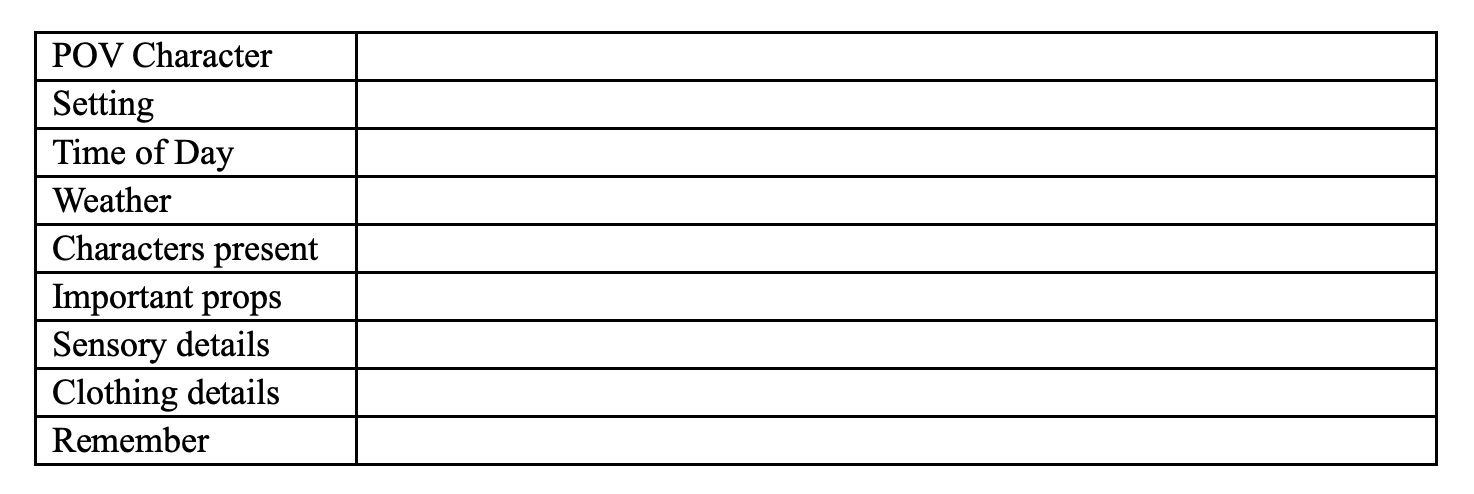Anatomy of a Stub
![]() Here’s the template we use for our stubs.
Here’s the template we use for our stubs.

Placeholder text
Keeping it simple allows this template to work for just about any story we want to tell. But it’s easy to customize if you want to. Adding the date of the scene might be handy, for example (especially if you’re writing a time-travel epic).
You fill in as much or as little of the table as each scene requires. If you want to pin things down more before you move ahead, the structure is there for you to use. If you don’t feel a need to specify what the weather is like, no one will scold you. The value in using a template is so you don’t have to waste mental energy stressing about what you might be forgetting. You can just fill in what you feel is important.
But, that innocuous line that says “placeholder text” is the most important thing.
Think of the stub like a recipe for the scene. The table is the ingredients list, but you still need the instructions for how to bring the dish together. That’s what the synopsis provides.
We tend to write them in present tense. They’re pretty much just a flat recitation of events, and they include a lot of glib statements about characters’ interior states. We don’t try to get fancy too much here; we save that for the real prose.
When it’s time to follow the recipe and write the scene proper, we often find that the stub’s synopsis started earlier than we really need. There’ll be a paragraph or two of backstory and then a phrase like, “So now he’s running for his life and wishing he’d kept his mouth shut.” That’s typically where we begin the scene.
What do we leave out of stubs, apart from fancy expressive language? Dialog, for the most part. But it’s not rare for lines in the stub to get pulled verbatim and put into our characters’ mouths. We say we save the flashy stuff for the “real” writing, but you know, you listen to the muse when she sings. The other big thing we omit form stubs is description. Here again, though, it does creep in. Plus we have the “sensory details” line in the table.
Bottom line: do what works for you. Let your tools evolve with your process. If you don’t work scene-by-scene, then stubs don’t relate to your workflow at all. But for us, they’re a perfect fit. We find stubs to be an indispensable aid in working with a partner.
